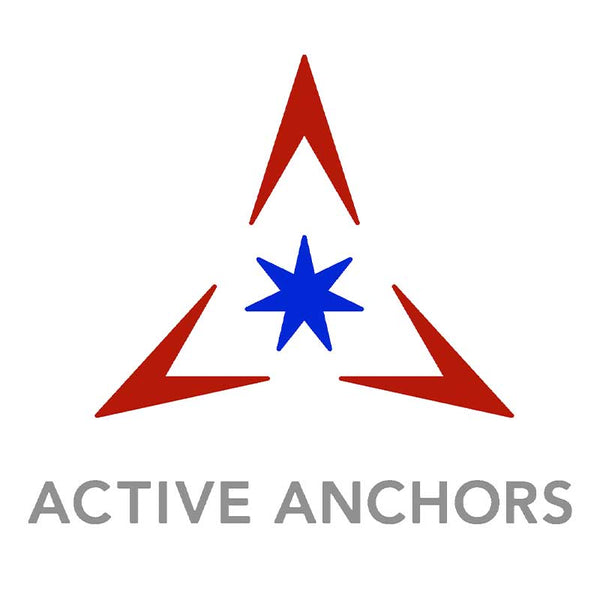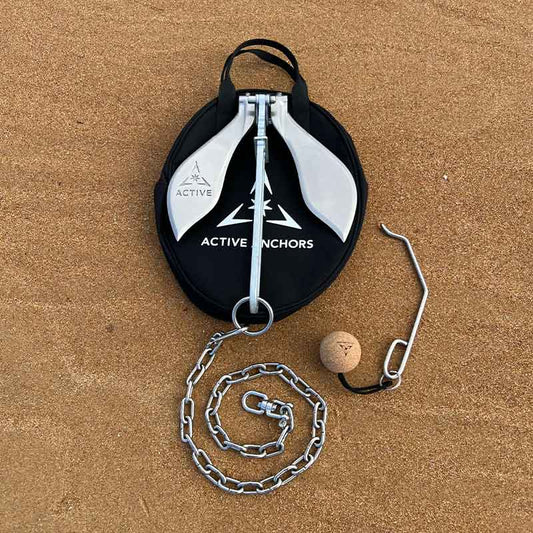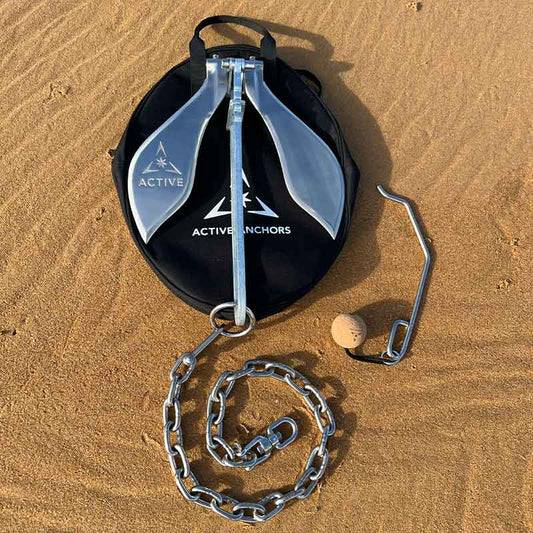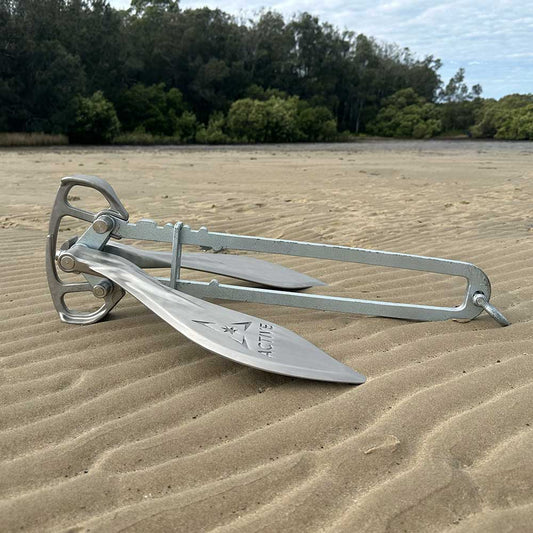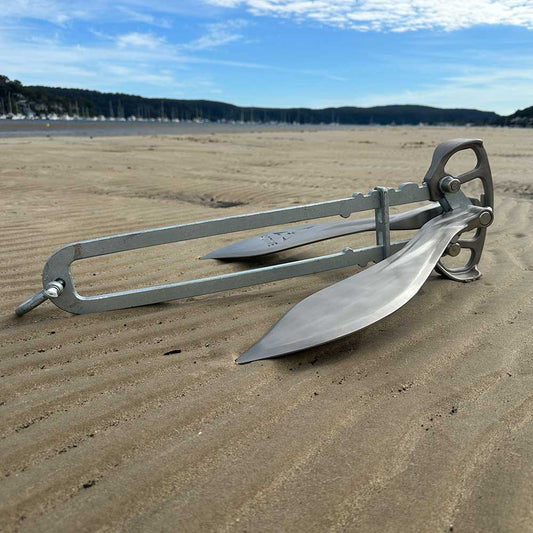Comparison testing
Anchor Load Analysis
Disclaimer
The claims made by manufacturers and individuals testing anchors can only be considered general in nature relative to the type of seabed they are testing on.
The application of scientific analytical techniques to judge the load capabilities of anchors and the requirements of vessels of a given size to be anchored in a particular environment are, of limited use in the real-world.
This is because conditions experienced locally may be vastly different to the area of testing. Therefore, direct comparisons can only be made in a general sense and are only of any use in making a subjective hypothesis, as ground density can change considerably anywhere within very short distances.
With that said, there are basic tenants of anchoring and rules of thumb that have been tested over many years of anchoring by seasoned sailors who have traversed the ocean all their lives.
Nothing in this document by Active Anchors Pty Ltd should be seen as an attempt to inform any individual, institution or organisation about local knowledge.
Anchor performance
Although there is infinite variability on the sea floor and rode length and type have a direct effect on an anchor’s performance, the factors that dictate the performance of a specific anchor in a general sense are;
- The density of the ground the anchor is on
- The size and weight of the anchor
- The surface area of the flukes
- The pitch of the flukes in relationship to the shank
- The ability of the anchor to set into the seabed
- The orientation of the fluke surface to create drag
- The capacity to maintain structural integrity with changing directional loads.
Catenary angle and scope
The only relationship a vessel on the water has to its anchor is through it’s rode (anchor rope or chain). All directional load is applied to the anchor through the rode. A vessel on the water is always moving to a varying degree so, the angle on the rode is changing constantly. The curved line from the rode attachment point on the anchor to the point it touches the vessel is known in technical terms as the catenary.
The scope of the rode is a figure expressing the ratio of the rode length to the vertical distance from the sea floor to the point at which the rode first comes into contact with the vessel.
Angle of attack
The primary requirement of an anchor is to bite into a given substrate and take hold. The tip or point of an anchor must pierce the ground the way the point of a hook pierces the lip of a fish. Once it has bitten into the seabed, an anchor needs to go deeper to get a better hold and prevent the ground shearing and letting the anchor go.
Once a hook has pierced the mouth of the fish and gone past the barb, the point of the hook is then superfluous to the continued holding of the fish.
In the case of an anchor, once the anchor has bitten into the ground the tip needs to maintain a downward trajectory to ensure a better hold in the ground. The big difference in setting a hook in the mouth of a fish and getting an anchor to set in a seabed is that both the fish and the tip of the fishing rod are moving. The seabed does not move.
The reason that this obvious point needs to be made is that the boat is moving all the time and is therefore applying load to an anchor at different angles. This is a problem for most anchors as the fluke pitch angle relative to the shank is usually only 12 to 15°. So, if the rode angle gets too steep ( catenary is flat), the anchor will simply be pulled from the ground.
To prevent this happening it is a requirement for all anchors (apart from Active Anchors) to have a long chain (at least one third of the scope is considered optimal). With this reasoning, many sailors believe it’s the chain that does the work and the Anchor is virtually useless without it. In some regard they are right as without the chain, the anchor will simply be pulled from the seabed by a high sea or strong winds.
The fluke pitch angle is also very important to help the anchor do its job, which is to create maximum drag and keep the vessel where it is. The following diagram shows the difference in drag surface area that a 10 x 10 centimetre square makes at different angles of attack.

It can be seen in simple terms that a pitch of 30 degrees offers double the drag and therefore double the stopping profile compared with a 15-degree pitch. Even though there is no change in the size of the square.
Recommended scopes.
A rule of thumb has developed that says the scope of 7 to 1 is ideal. That means that for every one metre of height the bow of the boat is above the sea floor, the boat should have 7 m of rope and chain out to prevent an almost flat catenary (in high seas or strong winds) from going above an angle of 12°.
The problem is a 7 to 1 scope often results in a very long rode. If a boat is in 10 m of water, it requires a 70 m rode. This translates into a vessel rotating around in a circle with a diameter of 140 m, which can be a big problem when many vessels are anchored in a confined space.
Therefore, the only option is to anchor with a shorter rode. As a result, a scope of 5 to 1 is considered acceptable practice. The reality is however, that 5 to 1 is often a luxury and scopes of 3 to 1 are often required to be used in deep but confined anchorages.
Assumptions.
For those using generic rules of thumb as a method of selecting a safe rode length, basic geometry is often not a consideration. As a result, the safety factors assumed to be inherent in many setups, are in fact non-existent in heavy weather conditions.
As an example, the following drawings show the catenary associated with two scopes that are used on a regular basis and are considered by much of the boating community as relatively safe and conservative practice. Much of the sailing / boating community consider a margin of safety in relative terms but don’t consider them in the absolute terms of simple geometry.
If they did, they may realise there is no safety margin in the setup they have and they are beyond the point of failure if a high wind or a strong swell are encountered.
This is because most modern single fluke anchors have a setting pitch of 12 to 15° with the majority being closer to 12 to 13 degrees. An anchor set with a 7 to 1 scope has a full load, direct line pull angle of 8.1°. In a 1 metre swell that results in a straight-line angle of 8.9° so there is always a safety margin of at least 4 to 5°.
It can be seen from the following diagrams that if full load is put onto the anchor rode with a scope of 6 to 1 most anchors only have a margin of safety of 2°. That means the anchor will be pulled along with the top surface of the fluke not engaging or creating any real drag. The anchor is simply acting like an arrowhead tip cutting through the substrate in soft ground.


A scope of 5 to 1 has a straight-line angle of 11.31° which increases to 12.7° in a 1 metre swell. Any rode shorter that this is risks pulling the anchor from the seabed.


At a scope of 4 to 1 the most anchors will be pulled to the surface in heavy conditions, come out of the ground and need to reset.
Active Anchors - the fundamental difference.
A scope of 3 to 1 has a straight-line angle of 19.5°. That increases to 21.5° with a 1m swell. With an Active Anchor the articulated stock has at least 15° of extra pitch so there is still a theoretical safety factor of at least 6° in a 1 metre swell.

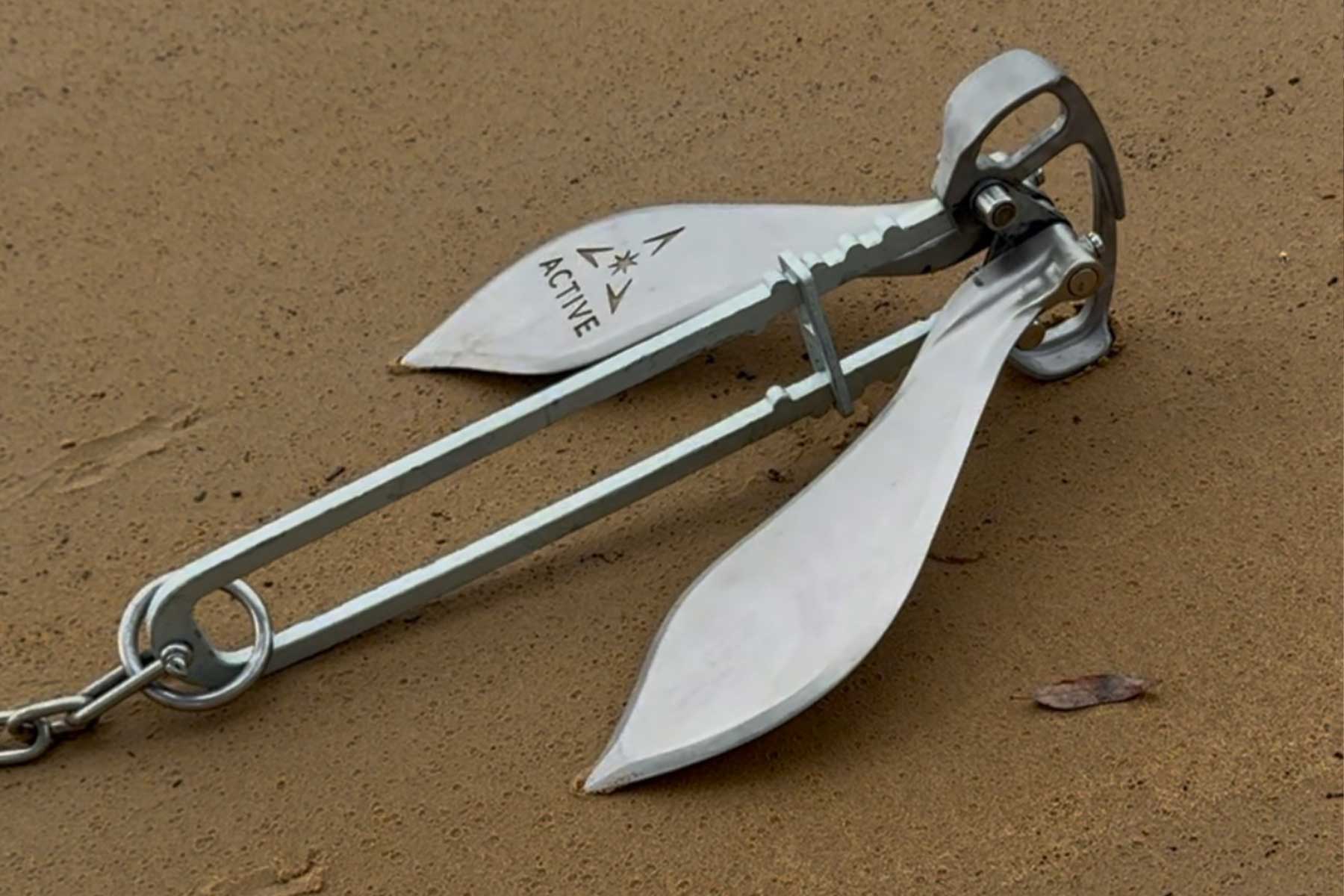
-
ACTIVE DF200 - Anchor for Jet Skis, Kayaks & Tenders up to 3 Metres (10') in length
No reviewsRegular price $175.00 AUDRegular price -
ACTIVE DF300 - Anchor for Jet Skis, Kayaks & small boats up to 4 Metres (13') in length
1 reviewRegular price $220.00 AUDRegular price -
ACTIVE DF400 - Anchor for fishing boats & runabouts 4-6 Metres (14-20') in length
1 reviewRegular price $375.00 AUDRegular price -
ACTIVE DF500 - Anchor for vessels up to 10 Metres (34') in length
1 reviewRegular price $695.00 AUDRegular price -
ACTIVE DF600 - Anchor for vessels up to 15 Metres (50') in length
No reviewsRegular price $1,195.00 AUDRegular price
